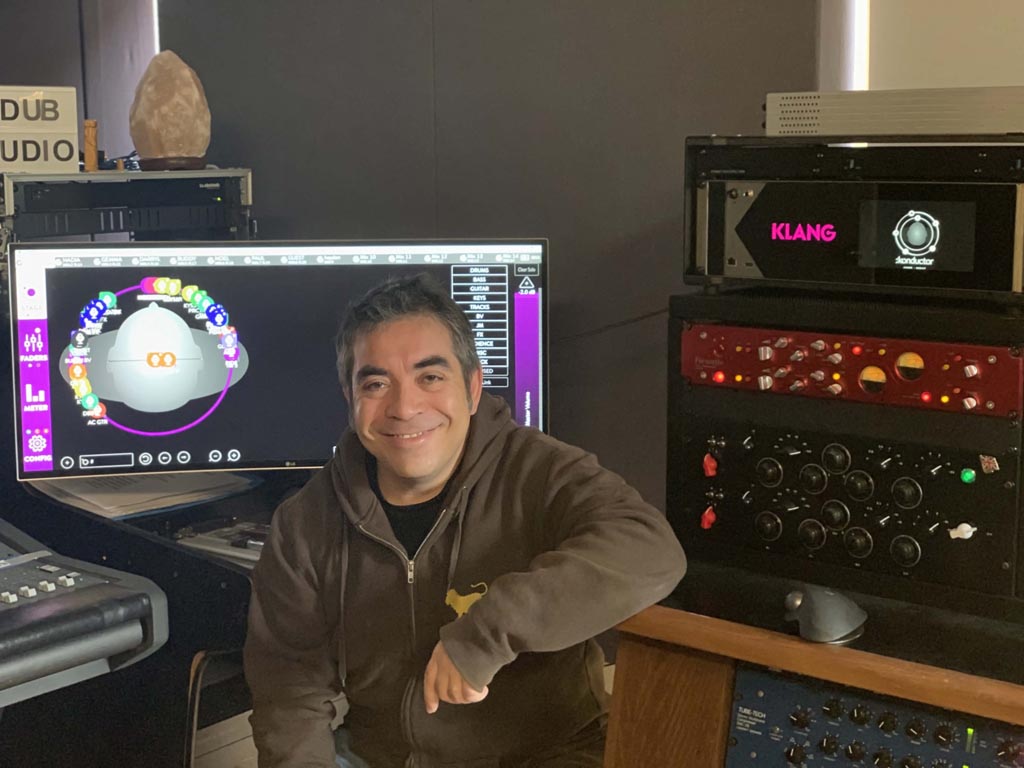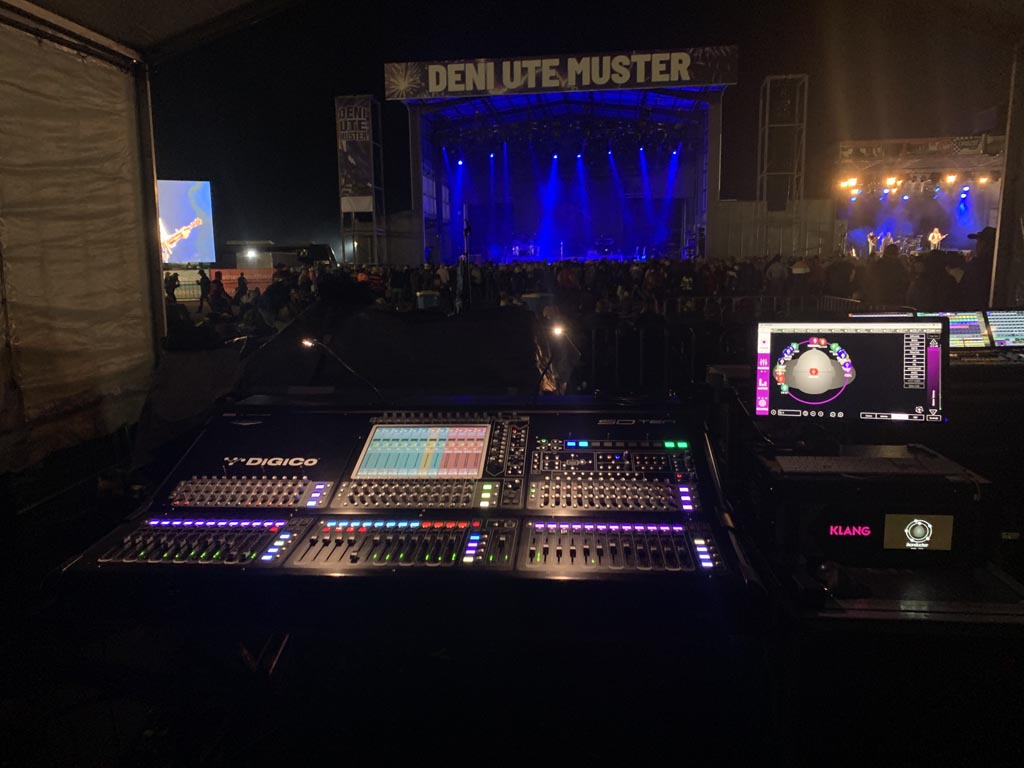RELIABLE
23 Feb 2023
IVAN ORDENES – Immersive Audio and the KLANG IEM system

Subscribe to CX E-News
Immersive Audio and the KLANG IEM system
When Rod Stewart appeared at Wembley Stadium in June 1995, he was backed by a 14-piece band and a 22-piece orchestra. But while most major artists of this era performed amid a jumble of cables and foldback monitors, there was not a single monitor speaker on the stage. This was the first European tour by a major artist to provide all performers with wireless In-Ear Monitoring. Now, almost 30 years later, IEMs have become a ubiquitous component in stage shows around the world. Three decades have provided ample time for the concept to mature, but until recently it seemed innovation in the technology had plateaued, with a plethora of capable systems available from major brands.
Enter KLANG:technologies, a Germany manufacturer approaching the concept from a different angle, or should we say, different angles, as KLANG is the world’s first 3D in-ear monitor mixing technology.
KLANG
Employing 3D binaural processing techniques, KLANG is an ecosystem of audio processing systems enabling virtual spatial separation of inputs within an in-ear mix. Using multifarious psycho-acoustic magic, KLANG can trick the IEM user’s ears and brains into ‘hearing’ instruments and inputs positioned across a three-dimensional soundstage. This offers the user 360° pan position possibilities, as well as the convincing illusion of height and distance. These new dimensions allow for better perceived separation of elements in a live mix, ultimately leading to a better performance.

There are several hardware processors available in the range, all of them IP networked for easy integration and accessibility. The current flagship of the range is the KLANG:konductor, a rack-mount style system offering processing of 128 input signals at up to 96kHz, with a lightning-fast processing latency of less than 0.25ms. The KLANG control software can be accessed via phone, tablet, or PC, allowing each performer to control their own personal 3D mix via one of these interfaces.
Real World Advantages
Ivan Ordenes is one of many pro audio veterans making regular use of KLANG in the field. The founder of Dubology Studios, Ivan has mixed for the likes of Coldplay, Simply Red, Pete Murray, Guy Sebastian, Grinspoon and an abundance of others. An experienced FoH and Monitor engineer, Ivan was an early adopter of the KLANG ecosystem and has been using it to drive IEMs on recent shows with the illustrious Jessica Mauboy.
“I have been the sole tech for Jessica Mauboy on the road, for the greater part of the past seven years,” explains Ivan, “and in 2019, when I saw KLANG demo-ed at DiGiCo’s NAMM booth, I thought to myself, ‘that looks radical – immersive in-ear monitoring!’ I knew I definitely wanted to use it with Jessica.”
Throughout previous years as a live tech for Jessica, particular scenarios would result in Ivan “getting stretched way beyond [his] capabilities,” even when working with a dedicated monitor engineer.
“Jessica would keep on turning to me at FoH and say, ‘Hey can we do this or that in my ears?’ So, a few times I had to take over mixing her in-ear mixes from FoH, while the monitor engineer looked after the rest of the band.
That was neither efficient nor sustainable. So when Jessica launched ‘The Boss Lady’ tour we decided that whilst we had the technical company of a crew, and particularly, a very experienced monitor engineer, this was the perfect scenario to take KLANG on the road.”
Ivan did his research and due diligence to end up with some KLANG demo hardware from Group Technologies. Further testing at pre-tour rehearsals saw Jessica, the band and Ivan all signing off on doing more with KLANG. According to Ivan, the crew immediately discovered that a key benefit in using KLANG over traditional IEM feeds was hearing protection.
“KLANG have this fantastic feature called the group mixer that allows all the users, as they control their mixes, to click up and down the levels of the groups that they need. If I create a guitar group and click that up, everything else goes down proportionally. It keeps a very constant SPL in the ears.”
That consistent level not only reduces wearer fatigue but helps to keep the user’s ears safe. “People forget that with in-ears, it’s a lot more harmful, potentially, than stage monitoring” notes Ivan. “All it takes is one little mistake and it could be very detrimental for that person’s hearing. So, that’s the first thing I liked about KLANG. The fact that it uses this 3D in-ear processing is sensational, but it also regulates the levels very, very well.”

A Monitor Engineer’s Assistant
There has been some noise in the pro audio community about a system like KLANG being a job threat, but Ivan helps clarify why monitor engineers won’t be going anywhere anytime soon: “KLANG is not a monitor engineer replacement at all. On the contrary, it’s a great monitor engineer’s assistant. Think of it like a virtual assistant for those gigs where you have a very important front person. KLANG allows the engineer to focus on the ‘main character’ at the front of the stage, while the band or orchestra has immediate access to their own mix without having to wait for the engineer’s attention.”
Console Integration And Control
KLANG is compatible with digital mixing consoles supporting either ADAT, Optical, DANTE, AES67, MADI or Optocore, with DiGiCo’s Quantum/SD ranges possessing additional workflow integrations such as access to the KLANG UI directly from the console surface. Like many modern pro audio devices, KLANG is reliant on a solid IP connection, linking KLANG processers to both mixing console and UIs.
“Our workflow these days, relies first and foremost on a Wi-Fi router. Knowledge of network and IP is starting to become very necessary these days for sound engineers. Whether we like it or not. As an old-schooler, the first thing I had to do was to learn the basics of IP management and network control, to make sure that KLANG integrates well with the console,” explains Ivan.
“But it was worth it. Jessica Mauboy and the band feel like they have a real advantage in the field, and my job is made easier at the same time. The KLANG:App is so effective and the available features are very powerful.”
Having downloaded a copy to test this myself, I concur. With KLANG hardware being highly capable, it’s encouraging to see the UI equally so.
Apart from the obvious 3D positioning in the ears, it has a very simple, intuitive yet powerful interface. The demo track highlights all of this and particularly illustrates how good the aural separation of inputs is when using the immersive 3D mode. Switching between that and stereo mode shows how much dimension and clarity is added to the mix.
I can easily see how this would be a game changer for a wide gamut of performers. The layout and format of the app makes the whole system easy to understand and use.
One could say it’s child’s play. Ivan relates: “The other day, my 8-year-old nephew saw something on TikTok, where the guy was panning left and right within his ears. My nephew asked me, ‘How does that happen?’ and I explained to him what panning means, then downloaded the KLANG app for him and he now plays with that every day. Another sound engineer in the making!”

The Future Is Here
Foldback wedges are likely to be around for some time yet. Purely due to budget – up front cost for venues, and the cost of custom in-ears to musicians means that wedges will continue to be an industry staple. But for medium to larger acts, orchestras and installations, in-ears are a good choice, and when coupled with immersive 3D processing from the likes of KLANG, an even better choice. More clarity, better sonic separation, less fatigue and easy usability – what’s not to like?
Subscribe
Published monthly since 1991, our famous AV industry magazine is free for download or pay for print. Subscribers also receive CX News, our free weekly email with the latest industry news and jobs.






